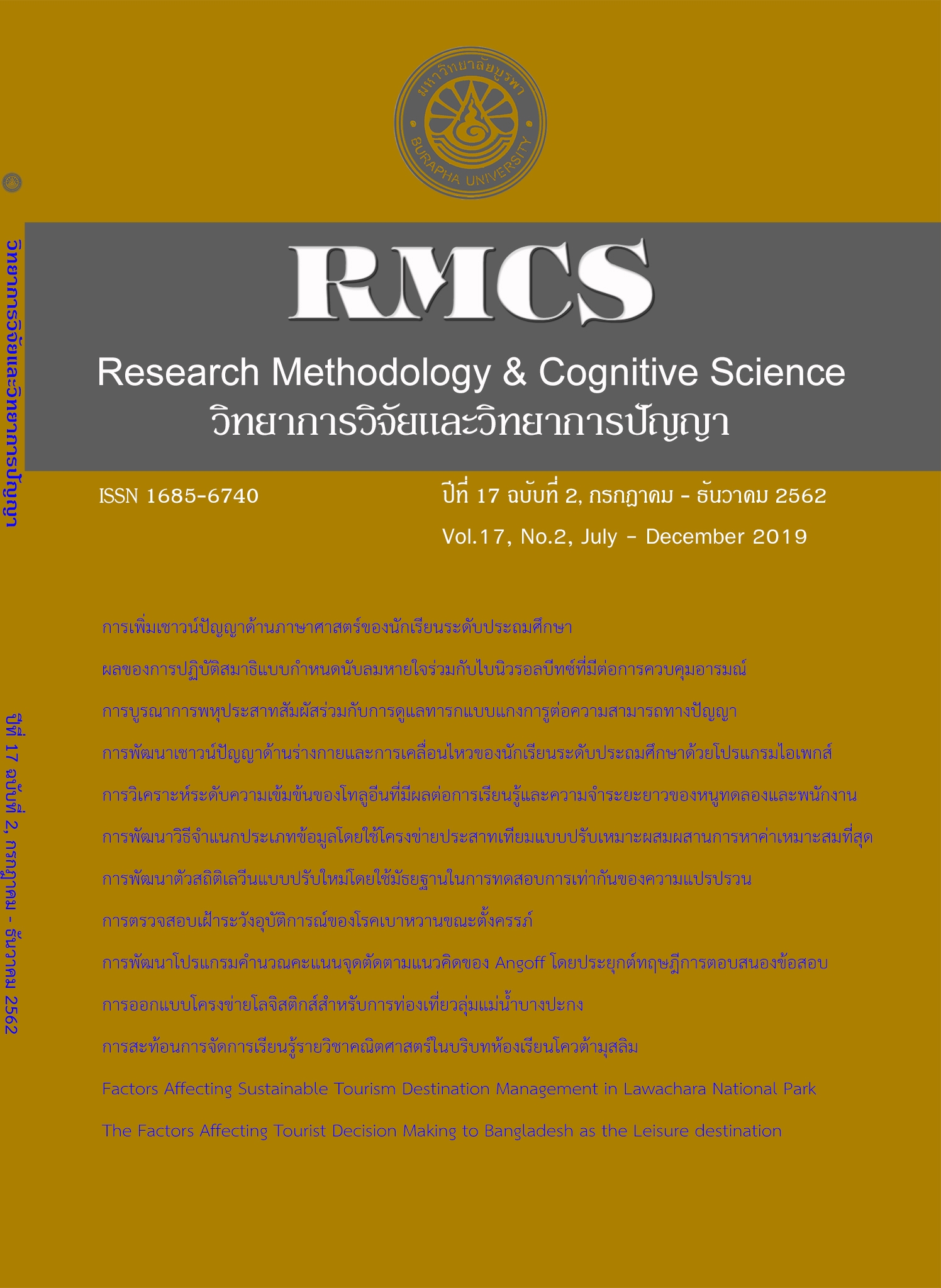Development of Data Classification using a Hybrid Method of Adaptive Artificial Neural Networks and Particle Swarm Optimization for IdentifyingPatients at Risk of Diabetes
Main Article Content
Abstract
This research aimed to 1) develop a method of data classification using Adaptive Artificial Neural Network and Particle Swarm Optimization (AANN-PSO),2) comparethe performance of the developed data classification method with three types: Adaptive Artificial Neural Network and Particle Swarm Optimization (AANN-PSO), Artificial Neural Network and Particle Swarm Optimization (ANN-PSO) and Artificial Neural Network (ANN) and 3), classifythe patients who are at risk of diabetes and normal subjects with the method of Adaptive Artificial Neural Network and Particle Swarm Optimization (AANN-PSO). The data set involved 7,000 patients who were at risk of diabetes, in the area under the responsibility of the Nakhon Phanom Provincial Health Office in the year 2018. The research results were as follows:
1. The data classification using Adaptive Artificial Neural Network and Particle Swarm Optimization(AANN-PSO)with the new conversion functionwhen acted to decrease the slope of the target function, while data classification performance increased.
2. Data classification using AANN-PSOresulted in better performance than ANN-PSOand ANNin all five situations. Furthermore, when the sample size was increased, the performance was even better.
3. Factors that affected the risk of diabetes included body mass index, diastolic blood pressure, age, systolic blood pressure, and a family history of diabetes. The classification of patients who are at risk of diabetes by using AANN-PSO had an accuracy of 92.79%, withmean square error of 0.07.
Article Details
References
Eberhart, R., & Kennedy, J. (1995). A new optimizer using particle swarm theory. In Micro Machine and Human Science, 1995. MHS'95., Proceedings of the Sixth International Symposium on (pp. 39-43). IEEE.
Edla, D. R., &Cheruku, R. (2017). Diabetes-finder: a bat optimized classification system for type-2 diabetes. Procedia Computer Science, 115, 235-242.
Geethanjali, M., Mary Raja Slochanal, S., & Bhavani, R. (2008). PSO trained ANN-based differential protection scheme for power transformers. Neurocomputing,71(4-5), 904-918.
Jain, S., Shukla, S., &Wadhvani, R. (2018). Dynamic selection of normalization techniques using data complexity measures. Expert Systems with Applications, 106(1), 252-262.
Jaroenrat, K. (2015). Particle Swarm Optimization for Open Shortest Path First Network’s Traffic Engineering. Information Technology Journal, 11(1), 43-52.
Karan, O., Bayraktar, C., Gümüskaya, H., &Karlık, B. (2012). Diagnosing diabetes using neural networks onsmall mobile devices. Expert Systems with Applications, 39(1), 54-60.
Ministry of Public Health. (2016) Department of Mental Health. [Online]. https://www.dmh.go.th/news-dmh/view.asp?id=25634
Mohammadi, N., &Mirabedini, S. J. (2014). Comparison of particle swarmoptimization and backpropagation algorithms for training feedforwardneural network. Journal of Mathematicsand Computer Science, 12(1), 113-123.
Nai-aruna, N., &Moungmaia, R. (2015). Comparison of classifiers for the risk of diabetesprediction. Procedia Computer Science, 69(1), 132-142.
Sahu, B., & Mishra, D. (2012). A Novel feature selection algorithm using particle swarm optimization for cancer microarray data. Procedia Engineering,38(1), 27-31.
Smyth, G. K., & Speed, T. (2003). Normalization of cDNA microarray data. Methods, 31(4), 265-273.
Sumathi, B.,&Santhakumaran, A. (2011). Pre-diagnosis of hypertension using artificialneuralnetwork. Journal of Computer Science and Technology, 11(2), 42-48.
Wang, W. L., & Tang, M. H. (2015). A Normalization process to standardize handwriting data collected from multiple resources for recognition. Procedia Computer Science, 61(1),402-409.

